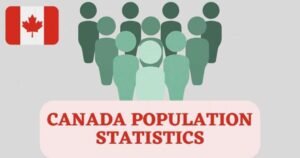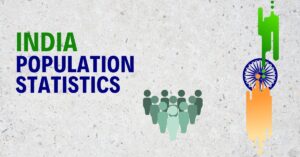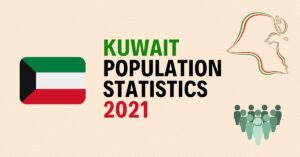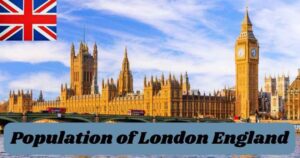England, the largest country within the United Kingdom, is located in the southern part of the island of Great Britain. It shares borders with Scotland to the north and Wales to the west, while its eastern and southern coasts are bounded by the North Sea and the English Channel, respectively. London, its capital, is a global city and financial centre known for its rich history, cultural diversity, and iconic landmarks such as the Tower of London, Buckingham Palace, and the British Museum.
England boasts a diverse landscape, ranging from rolling countryside and historic towns to bustling cities and scenic coastlines. It has a profound historical and cultural influence, having been the birthplace of the Industrial Revolution and home to significant literary figures like William Shakespeare and Charles Dickens. Today, England is a dynamic and influential nation, renowned for its contributions to art, science, and politics.
England Population 2024
According to the Census released by the Office for National Statistics in 2024, the England population is 57,106,000 in mid 2022.
England had the highest population density of the four countries in the UK as of mid-2022. However, this figure encompasses significant variation within England itself. For instance, London had a population density of 5,640 people per square kilometre, whereas the South West region had a much lower density of 242 people per square kilometre.
| Year | Population | Median Age | Population Density (pop per sq. km) |
|---|---|---|---|
| mid-2011 | 53,107,000 | 39.4 | 408 |
| mid-2022 | 57,106,000 | 40.5 | 438 |
England Population Growth
- 2011 Population: 53,107,000
- 2022 Population: 57,106,000
- Growth: The population increased by approximately 3,999,000 people over 11 years, representing a growth of around 7.5%.
This substantial population growth highlights an increasing demand for housing, infrastructure, healthcare, and education services. The growth can be attributed to natural population increase (births minus deaths) and net migration.
Median Age
- 2011 Median Age: 39.4 years
- 2022 Median Age: 40.5 years
The median age increased from 39.4 to 40.5 years, indicating an ageing population. This demographic shift has significant implications:
- Healthcare: Increased demand for healthcare services catering to older individuals.
- Workforce: Potential challenges related to a shrinking workforce and increased pension costs.
- Social Services: Greater need for social services and support for the elderly.
England Population Density
- 2011 Population Density: 408 people per sq. km
- 2022 Population Density: 438 people per sq. km
Population density has increased from 408 to 438 people per square kilometre, reflecting higher urbanization and potentially greater strain on urban infrastructure and services. This rise in density can impact:
- Housing: Increased demand for housing, potentially driving up property prices and rent.
- Transportation: Greater need for efficient public transport systems to manage higher commuter volumes.
- Environmental Impact: Increased pressure on natural resources and potential for higher pollution levels.
Insights
- Urban Planning: The growing population and higher density emphasize the need for effective urban planning to ensure sustainable development, efficient transportation networks, and adequate green spaces.
- Healthcare and Social Services: An ageing population requires a strategic approach to healthcare services, focusing on geriatric care, chronic disease management, and social support systems.
- Economic Implications: A larger and older population impacts economic policies, labour market strategies, and pension systems. Balancing the needs of an ageing workforce with economic productivity is crucial.
- Infrastructure Development: Increased population density necessitates investment in infrastructure, including housing, transportation, and utilities, to accommodate the growing population while maintaining quality of life.
Current England Population 2024
According to Ukpopulation.org, the estimated population of England as 57,041,000 (57 million) for the year 2024. This figure represents the total number of people living in England according to the latest available data. The table format includes columns for the data source, the current population figure with a clarification of 57 million, and the year of estimation. Such data is crucial for demographic analysis, urban planning, and policymaking, providing insights into population trends and societal dynamics shaping England in the present year.
| SOURCES | CURRENT POPULATION | YEAR |
|---|---|---|
| Ukpopulation.org | 57,041,000 (57 M) | 2024 |
Demographics in England
The population statistics for England have undergone notable changes between 2011 and 2022. By examining specific age ranges, we can observe trends and shifts within the demographic landscape. The youngest age group, 0-15 years, experienced a slight decrease in population, while the 16-25 age group saw a modest increase, potentially indicating stable educational and early career opportunities.
England Population by Age
| Age Range | Mid-2011 Population (Female) | Mid-2022 Population (Female) | Mid-2011 Population (Male) | Mid-2022 Population (Male) |
|---|---|---|---|---|
| 0-15 | 4,670,723 | 4,632,273 | 4,686,340 | 4,571,207 |
| 16-25 | 3,449,742 | 3,497,264 | 3,536,414 | 3,466,079 |
| 26-45 | 7,436,158 | 7,343,573 | 7,503,965 | 7,245,987 |
| 46-65 | 7,170,421 | 7,135,151 | 6,903,249 | 7,107,125 |
| 66-85 | 2,693,304 | 3,374,386 | 2,496,420 | 3,113,769 |
| 86+ | 982,845 | 1,146,820 | 544,230 | 720,619 |
The 26-45 age group showed a minor decline, perhaps due to economic factors impacting family planning. Meanwhile, the 46-65 age range remained relatively stable, reflecting consistent middle-aged demographics. Significant growth was observed in the 66-85 age group, highlighting advancements in healthcare and increased life expectancy. The 86+ age group saw the most substantial rise, underscoring the overall aging population and improvements in longevity. These trends offer valuable insights into the evolving demographic profile of England over the past decade.
England Population by Gender
| Gender | Population (Mid-2011) | Population (Mid-2022) |
|---|---|---|
| Male | 24,939,598 | 25,104,207 |
| Female | 24,733,193 | 25,305,263 |
Between mid-2011 and mid-2022, population changes varied significantly by age and gender. Younger age groups (0-15 and 16-25) saw slight declines or modest growth, while older segments (66-85 and 86+) experienced notable increases. For instance, males aged 86+ increased from 544,230 to 720,619, while females in the same group rose from 982,845 to 1,146,820, highlighting substantial demographic shifts towards an ageing population.
England Population by Race
The demographic profile of England showcases a vibrant mosaic of racial diversity. Below is a table detailing the distribution of England’s population by major racial categories, providing insights into both the percentage composition and corresponding numerical figures:
| Ethnicity | Percentage (%) | Number |
|---|---|---|
| Asian | 9.3 | 5,515,455 |
| Black | 4 | 2,409,283 |
| Mixed | 2.9 | 1,717,977 |
| White | 81.7 | 48,699,231 |
| Other | 2.1 | 1,255,632 |
The table outlines the racial composition of England’s population, emphasizing the diversity and distribution of various ethnic groups as of the latest data. It shows that the largest group by far is White, constituting 81.7% of the population, with approximately 48.7 million people. Following this, the Asian community makes up 9.3% of the population, totalling around 5.5 million individuals. The Black community comprises 4.0% of the population, numbering approximately 2.4 million people. Mixed-race individuals account for 2.9% of the population, totalling about 1.7 million. The smallest group categorized as ‘Other’ represents 2.1% of the population, with approximately 1.3 million people.
This distribution reflects England’s multicultural society, influenced by historical immigration patterns and demographic shifts over time. It underscores the importance of understanding and addressing the diverse needs and perspectives of these communities in areas such as social policy, healthcare, and education. The data also highlights ongoing challenges and opportunities related to promoting social cohesion and inclusivity within England’s diverse population.
Disclaimer: The data research report we present here is based on information found from various sources. We are not liable for any financial loss, errors, or damages of any kind that may result from the use of the information herein. We acknowledge that though we try to report accurately, we cannot verify the absolute facts of everything that has been represented.








